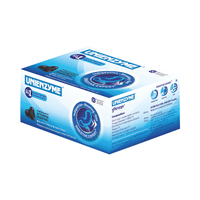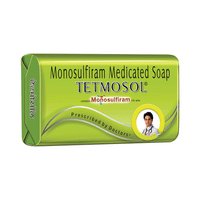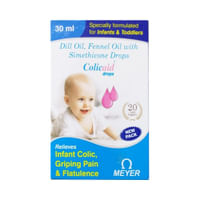Rs.20.90for 1 vial(s) (10 ml Injection each)
food interaction for Sultax
alcohol interaction for Sultax
pregnancy interaction for Sultax
lactation interaction for Sultax
food
alcohol
pregnancy
lactation
No interaction found/established
Caution is advised when consuming alcohol with Sultax 500 mg/250 mg Injection. Please consult your doctor.
CAUTION
Sultax 500 mg/250 mg Injection is generally considered safe to use during pregnancy. Animal studies have shown low or no adverse effects to the developing baby; however, there are limited human studies.
SAFE IF PRESCRIBED
Sultax 500 mg/250 mg Injection is safe to use during breastfeeding. Human studies suggest that the drug does not pass into the breastmilk in a significant amount and is not harmful to the baby.
SAFE IF PRESCRIBED
SALT INFORMATION FOR Sultax
Cefotaxime(500mg)
Uses
Cefotaxime is used in the treatment of bacterial infections.
How it works
Cefotaxime is an antibiotic. It kills the bacteria by preventing them from forming the bacterial protective covering (cell wall) which is needed for them to survive.
Common side effects
Decreased white blood cell count (lymphocytes), Increased white blood cell count (eosinophils), Low blood platelets, Jarisch-Herxheimer reaction, Convulsion, Urticaria, Increased creatinine level in blood, Erythema multiforme, Stevens-Johnson syndrome, Toxic epidermal necrolysis, Nausea, Vomiting, Injection site reactions (pain, swelling, redness), Hypersensitivity, Gastrointestinal disorder, Decreased white blood cell count (neutrophils), Positive Coombs test, Yeast infections, Vaginal inflammation, Increased aspartate aminotransferase, Increased alanine aminotransferase, Increased lactate dehydrogenase level in blood, Increased alkaline phosphatase level in blood, Increased blood urea nitrogen, Hemolytic anemia, Agranulocytosis (deficiency of granulocytes in the blood), Pseudomembranous colitis, Interstitial nephritis, Red spots or bumps, Dizziness
Sulbactam(250mg)
Uses
Sulbactam is used in the treatment of severe bacterial infections. It treats severe bacterial infections (most commonly pneumonia, bacteremia and skin and skin structure infections) caused by the pathogen Acinetobacter baumanii.
How it works
Sulbactam is a beta-lactamase inhibitor. It works by blocking an enzyme called beta lactamase produced by bacteria to inactivate antibiotics. Sulbactam is frequently combined with beta-lactam antibiotics, such as ampicillin, cefoperazone, meropenem. As a single medicine, it treats infection caused by a type of bacterium called Acinetobacter baumanii. This activity is mediated by its interaction with certain proteins.
Common side effects
Diarrhea, Injection site pain
SUBSTITUTES FOR Sultax
18 Substitutes
18 Substitutes
Sorted By
 Rs. 30.45pay 182% more per ml of Injection
Rs. 30.45pay 182% more per ml of Injection Rs. 19.55pay 809% more per Injection
Rs. 19.55pay 809% more per Injection Rs. 113.75pay 5163% more per Injection
Rs. 113.75pay 5163% more per Injection Rs. 20.40pay 847% more per Injection
Rs. 20.40pay 847% more per Injection Rs. 42.30pay 881% more per ml of Injection
Rs. 42.30pay 881% more per ml of Injection
Expert advice FOR Sultax
- Your doctor has prescribed Cefotaxime to cure your infection and improve your symptoms.
- Do not skip any doses and finish the full course of treatment even if you feel better. Stopping it early may make the infection harder to treat.
- Discontinue Cefotaxime and inform your doctor immediately if you get a rash, itchy skin, swelling of face and mouth, or have difficulty in breathing.
- Diarrhea may occur as a side effect but should stop when your course is complete. Inform your doctor if it does not stop or if you find blood in your stools.
Frequently asked questions FOR Sultax
Cefotaxime
Q. Is Cefotaxime the same as penicillin?
No, Cefotaxime is not the same as penicillin. Cefotaxime belongs to the third generation class of cephalosporins. Cefotaxime is active against numerous gram-positive and gram-negative bacteria, including several with resistance to other antibiotics such as penicillin.
Q. What kind of infections does Cefotaxime treat?
Cefotaxime is an antibiotic used to treat conditions such as lower respiratory tract infections (related to the lungs, windpipe and airways), skin and skin structure infections, urinary tract infections, pelvic inflammatory disease, bacterial septicemia, bone and joint infections, and meningitis (brain related).
Q. What if I forget to take a dose of Cefotaxime?
If you have missed a dose of Cefotaxime, take it as soon as you remember. However, if it is almost time for your next dose, take it in the regular schedule instead of taking the missed dose. Do not double the dose to make up for the missed one as this may increase the chances of developing side effects.
Sulbactam
Q. Why is Sulbactam added to other antibiotics?
Sulbactam added to other antibiotics like ampicillin, cefoperazone, etc., because Sulbactam contains Sulbactam, a beta-lactamase inhibitor, which reduces resistance and enhances the activity of other antibiotics like ampicillin, cefoperazone, etc., against the bacteria.
Q. Who should not take Sulbactam?
Sulbactam should not be taken by an individual if he/she had an allergic reaction to ampicillin, sulbactam, or any penicillin antibiotic (such as penicillins or cephalosporins), or if he/she has a history of liver problems caused by ampicillin/sulbactam.
Q. What should I discuss with my doctor before receiving Sulbactam?
Before taking Sulbactam, you should tell your doctor if you have ever had an allergic reaction to Sulbactam or any similar medicine. Inform the doctor if you have any type of allergy, asthma or breathing problems, heart disease or kidney disease. Let your doctor know about all the medicines that you may be taking as they may affect or be affected by Sulbactam. Pregnant or breastfeeding mothers should also seek their doctor’s advice before taking Sulbactam.






















